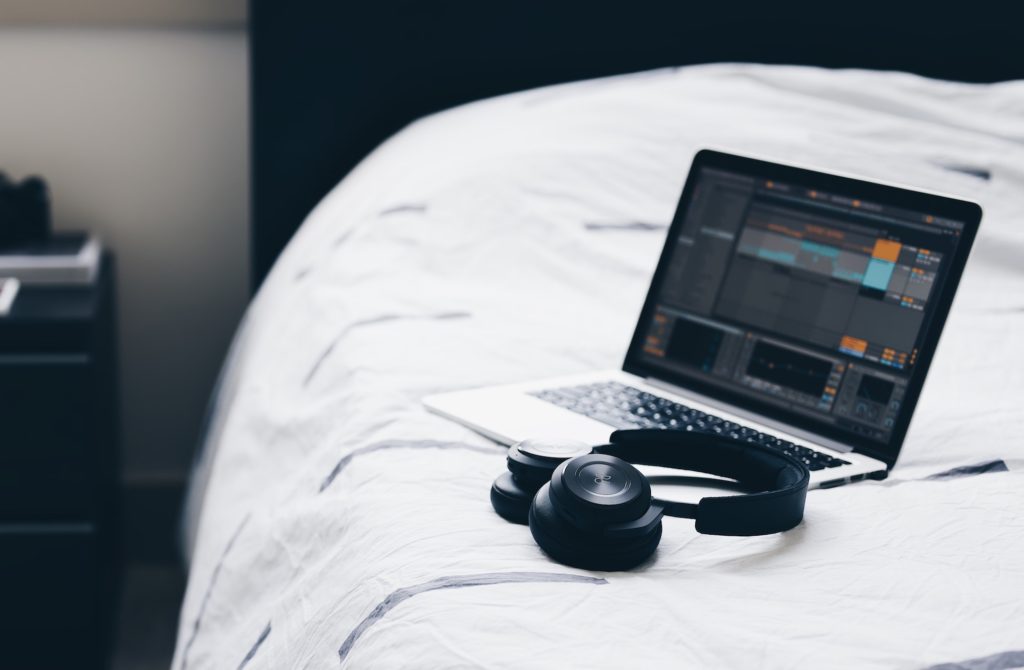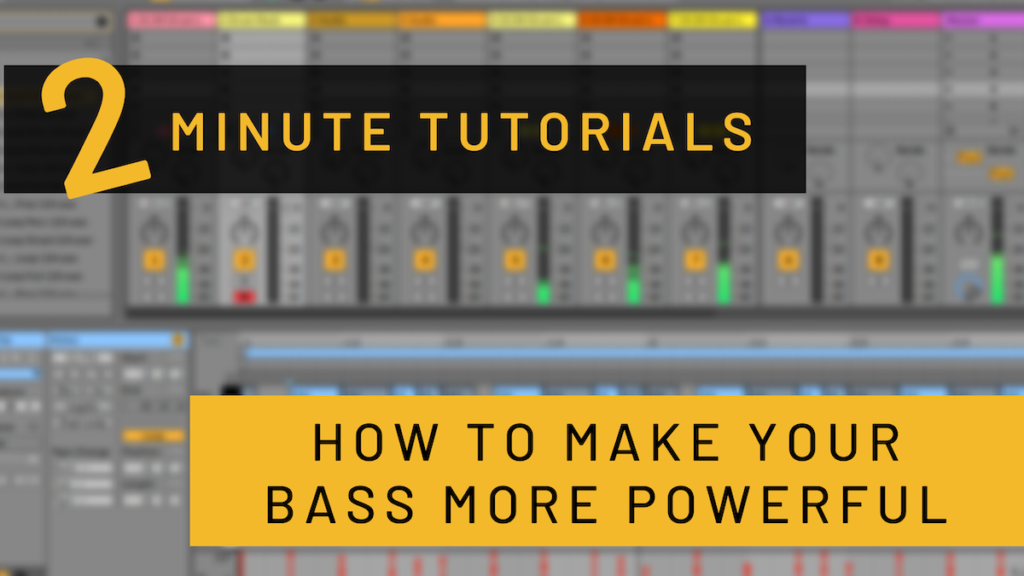What is headroom and why is it important?
Headroom is the distance between your highest-peaking signal and 0dbfs. When you learn how to create headroom, you can achieve a cleaner and louder mix. You can measure this on your DAW’s VU meter or download SPAN (shown below) for free here.

Why do we need to create headroom?
If you don’t leave enough headroom in your mix you can run into these issues:
- Your sound will lose dynamic range which can result in less punch. Your sounds will feel dull and lifeless.
- You’ll start clipping your signal which will cause distortion
- Your mix will have less room for mastering engineers to work with
- You won’t have any room to push volume louder if necessary later in the mix
These issues can all be damaging your mix. However, the biggest issue is when you have too many sounds that are too loud. Every one of your tracks eventually goes into a master fader. If you have too much signal in your master channel, you’re going to be hitting the ceiling or running close to it. This can lead to the above issues on your entire mix and not just individual tracks.
You can consider 0dbfs a volume ceiling that you don’t want to be hitting. Instead, this is a level you want to reach when your track becomes mastered. 0dbfs is generally what mastering engineers will bring your volume to (within +/- 1db). But if you get too close to this ceiling or actually hit the ceiling of 0dbfs, you’re not giving the mastering engineer any room to work within the mastering process.
Leaving headroom helps mastering engineers balance your mix. It helps with other things, too. The more you push your signal volume, the more you’re increasing the amount of signal taking up headroom.
When you start to max out that ceiling of 0dbfs, your sounds can start clipping and run into issues that will reduce the quality of your sound. This can happen in each of your tracks, but also in your master, individual effects, and within your synths or recordings as well!
We’re going to look at some ways that we can help reduce headroom as to not clip during any of our processing. This will help us get the cleanest possible sound. It will also maximize our headroom to get the most volume out of our mix.
What is Clipping?
First, let’s take a look at what clipping is:
Clipping is amplification distortion. It happens when you push an amplifier past the point of its maximum limit. It then goes into overdrive and causes waveform distortion. Sometimes this is the desired effect. But if this type of waveform distortion happens unintentionally, you risk damaging your mix.
The typical pre-master usually ends up having it’s highest peaks around -5dbfs. Let’s look at how we can achieve -5dbfs of headroom. That way, we are avoiding these issues and giving our mastering engineer room to work.
How to Create Headroom In Your Mix
Focus on the most important elements first, set boundaries, and work from them
Take your top three or four elements of your track and focus on balancing them first. Leave as much headroom as possible in your mix! A good starting point is having your loudest element peaking around -15dbfs, and having your other instruments balanced around this loudest element. This number is just a guide, but keep in mind the more instruments and sounds you have in your mix, the more potential headroom can be used. You can lower that guide even more if necessary.
Use your ears and your eyes!
Make sure you’re using meters to carefully watch how the peaks are reacting, as well as the average headroom. Keep in mind, even one tiny peak of audio can throw your meters up really high. Make sure you pay close attention to them. (We’ll address how to reduce this later.)
Cutting or Boosting efficiently with EQ
An EQ is one of the producer’s most useful tools. Using an EQ to cut or boost frequencies to help shape a sound is very useful, but sometimes boosting a sound can take up valuable headroom.
When you’re boosting frequencies in your EQ, make sure that you’re paying close attention to your meters. Boosting a sound by 5db might make the product sound better, but it could also really push your signal in a way that should be addressed. If you’re boosting a frequency, you may have to reduce the overall volume of what you’re boosting to compensate.
Another method is to remove competing frequencies from other instruments. This can make room for the area of frequency that you’re trying to boost.
Filtering unnecessary frequencies
Filtering out unnecessary frequencies will alleviate some headroom in your mix. If a sound is not helpful to your mix, you should almost always take it out.
A lot of times our sounds and samples have some frequencies that we don’t really hear but are still inside the sound somewhere. Maybe your snare drum has 1-2db of low frequencies that are hitting around 50hz. You don’t hear it, and by itself, it’s not really much of an issue. But once you add more instruments with a few decibels of this low information, it’s going to muddy up the low end of your mix. It will also take up a considerable amount of headroom!
Always consider which instruments you are using and what frequencies are required for the sound. Then filter and remove any unnecessary frequencies. This will open up headroom and clear some of the clutter in your mix, too.
Controlling Dynamics
Using compressors and limiters can drastically reduce headroom in your mix. They help to reduce both dynamic range (the difference between the loudest and quietest part of a sound), and by catching peaks that would otherwise get through. These peaks can not only take up headroom, but can also spike your meters. This can give you a false sense of the actual average headroom you’re using.
Compressing the sound to reduce the peaks will allow for some extra headroom. If you have really tiny peaks you could use a limiter with absolutely no attack to catch them. You’ll want to be careful as to not squish your sounds too much.
Turn everything down!
Simple and very effective!
If your kick is too quiet and you’re running out of headroom, grab everything BUT the kick and turn it down. If you’re perfectly happy with the balance of your mix but it’s taking up too much headroom, turn everything down equally.
You do have to be careful with this if you are using busses or submixes. If one track is routed into another and you turn down the volume, it could have an effect on the overall processing of the bus that it is routed to. For example, you have a hi-hat routed into your drum bus, and your drum bus has been properly compressed with glue compression. Turning up that hi-hat will now result in a different amount going into the bus which will change the amount of signal the compressor is compressing. You’ll have to go in and accommodate those changes in your glue compressor. Nitpicky things, but important!
Conclusion:
Now you know how to create more headroom in your mix. Your mixes will have more clarity and can now be mastered with more room for balance. Overall, your mix should sound a bit louder too!
Remember, there is nothing wrong with ending up with extra headroom. You can always turn it up! But leaving the track with too little headroom, or even worse, clipping your sounds, could very quickly ruin your mix.
If you have any more questions, consider booking a private coaching session with me!






